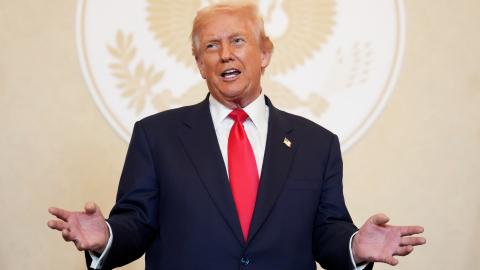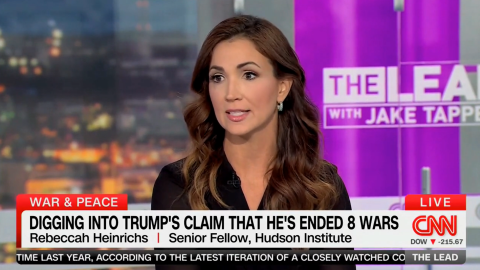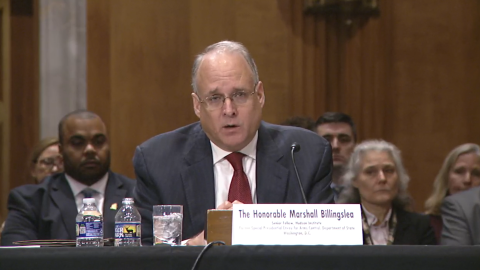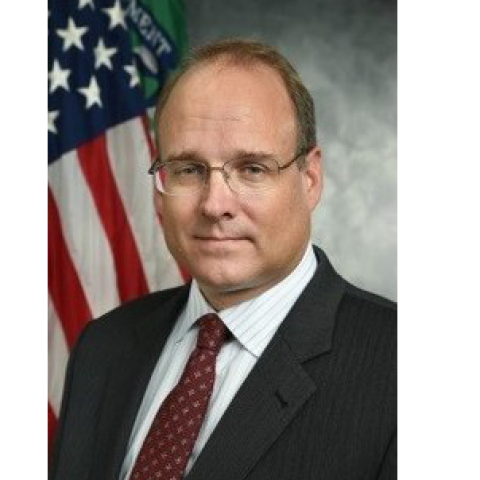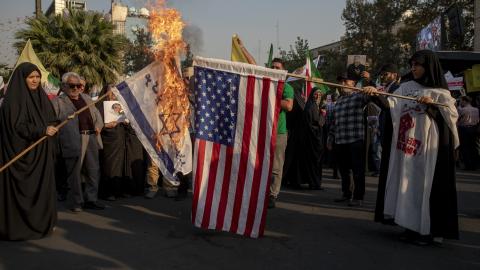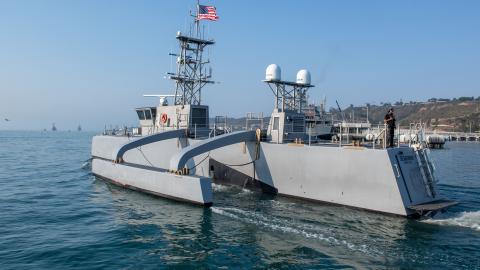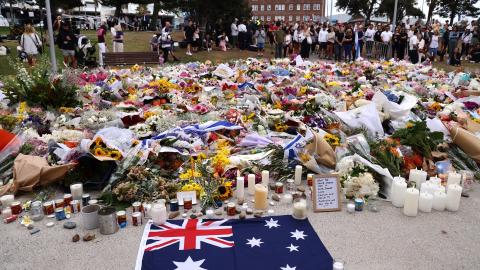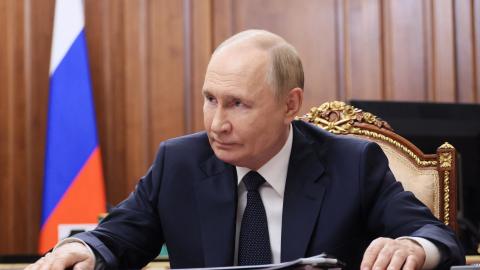On the campaign trail, President Donald Trump made ending Russia’s invasion of Ukraine the key objective of his foreign policy. Without question, this goal has proven to be one of the most complex and demanding tasks for the administration. While the president has achieved some notable and historic diplomatic successes in recent weeks, most recently with the peace agreement between Armenia and Azerbaijan, many believe he has lost control of the diplomatic process with Moscow and that President Vladimir Putin is setting the terms. But the upcoming summit between the two leaders in Alaska on August 15 is an opportunity for President Trump to reassert control over the negotiations.
Ever since President Trump entered office and began pursuing a diplomatic end to the Russia-Ukraine War, President Volodymyr Zelenskyy has acquiesced at every opportunity to President Trump’s requests and demands—whether by repeatedly agreeing to ceasefires or by signing a historic minerals agreement with the United States. Conversely, President Putin has sought to undermine the process at every turn, disregarding President Trump’s calls for a ceasefire by targeting civilians in major cities, including Kyiv. President Zelenskyy is the primary enabler of peace, while President Putin remains the main obstacle.
Assumptions and Principles for President Trump in Dealing with President Putin
When President Trump meets with his Russian counterpart in Alaska, he should go into any discussion understanding the following assumptions:
- This is Imperial Russia. President Putin is not interested in spreading a rigid ideology, as Soviet leaders did. He is instead focused on expanding Russia’s military, economic, and political influence by dominating neighboring states and regions.
- Any ceasefire will be temporary. While Russia may negotiate a cessation of hostilities, history shows that such agreements rarely hold—or, as Charles de Gaul once said of treaties, “they last as long as they last.” President Putin agrees, and this is why Russia has consistently ignored or selectively implemented ceasefire terms. He will likely resume aggression once he is better positioned. Unless Russia is forced to stop or effectively deterred, Moscow will continue until it captures all of Ukraine, even if this takes years.
- Putin is not a credible partner. Since coming to power in 1999, President Putin has repeatedly sought to undermine US interests and destabilize democracies worldwide. From using oil exports to threaten or coerce European allies to pursuing adventures in Latin America, Africa, and the Middle East, the Kremlin has shown that its objectives extend beyond Ukraine and it will use force and deception to achieve them.
- Russia will be back. Neo-imperial Russia sees expansion as central to its national identity, so Moscow will remain a threat to its neighbors. The question is not if, but when and where it will assert itself again. President Putin believes his attack on Ukraine—even with its shocking cost in blood and treasure—enhances Russia’s power.
Peace, Not Surrender
Since Russia’s full-scale invasion in 2022, Ukrainians have demonstrated remarkable resilience and courage, reclaiming nearly half of the land Russia initially occupied. Preferably, the US and its allies should provide Ukraine with all the necessary support, financial resources, and military material and munitions it requires to expel the Russian invaders from its internationally recognized territory. However, this is not going to happen. The best outcome is therefore a fair and just peace for Ukraine that guarantees security from future Russian aggression.
A just and fair peace is also in President Trump’s best interest. Any outcome that suggests Russia “won” in Ukraine would severely damage his credibility as a statesman abroad. It would also hurt his popularity at home, as the vast majority of Americans, including Republicans, do not trust President Putin. If Moscow emerges from the war with gains, President Trump’s critics at home and abroad will rightly question the strength and strategy behind his foreign policy.
Ukrainians want the war to end, but they do not want to surrender. As President Trump meets with his Russian counterpart, he should push for a just peace rooted in four essential principles:
- Formal non-recognition of Russian-occupied Ukrainian territory. The United States should never legitimize Russian-occupied areas of Ukraine as part of the Russian Federation. The 1940 Welles Declaration, wherein the US refused to recognize Soviet control of the Baltic states during the Cold War, is a useful precedent for how such a policy can uphold international law.
- Full preservation of Ukrainian sovereignty. Ukraine needs the right to shape its government, conduct elections, join alliances, and build its military free from Russian interference.
- Meaningful reconstruction assistance. Western governments and institutions should help fund Ukraine’s recovery with a combination of frozen Russian assets, private investment, and direct aid, ensuring the country’s economic resilience and long-term stability.
- Return of prisoners of war, political detainees, and abducted Ukrainian children. Tens of thousands of Ukrainians remain in Russian custody, including thousands of children forcibly taken from their families. Repatriation should be a moral and legal priority in any settlement.
A Layered Security Guarantee
Peace can only be achieved through lasting security. Because North Atlantic Treaty Organization membership is unlikely, Ukraine and its partners should pursue a five-layered strategy to secure a just and durable peace while deterring future Russian aggression.
- Layer 1: A civilian-led monitoring mission. A neutral actor that both sides can trust should verify compliance with ceasefire terms and patrol the line of occupation.
- Layer 2: A coalition of the willing. Countries like the United Kingdom, France, Canada, and Türkiye can contribute to a rotational ground force presence, an air policing mission, and regular naval patrols in the Black Sea.
- Layer 3: American support. Washington should provide over-the-horizon capabilities, revive the National Guard partnership program, expand defense industrial cooperation with Kyiv, and continue supplying military assistance, whether through sales to European allies or directly to Ukraine.
- Layer 4: Euro-Atlantic engagement. Ukraine and its allies need to invest in a NATO-Ukraine Center of Excellence, allow Ukraine to participate in the NATO Response Force, create a joint European Union training mission, and reform EU regulations to accommodate future Ukrainian membership.
- Layer 5: Reinforce NATO’s eastern flank. These measures should include sustained deployments, deeper integration of Poland into NATO’s nuclear framework, a new Northern Europe air defense mission, and a continued US troop presence in Europe.
Preparing for Alaska
The upcoming summit with President Putin could be one of the most consequential events of President Trump’s second term. To achieve the best outcome for the US, he should:
- Be ready to walk away. President Trump should not hesitate to walk away—just as he did with Kim Jong Un during his first term—if talks do not produce acceptable terms.No deal is better than a bad deal.
- Start applying direct pressure. President Trump should apply real pressure on Moscow if President Putin refuses to engage in good-faith negotiations. In recent months, President Trump has set multiple deadlines for Russia to come to the table, all of which have passed without consequence. Instead, the administration has focused on peripheral measures—such as recent tariffs on India—rather than confronting Moscow directly. This approach has been ineffective and needs to change.
- Avoid a partial ceasefire, and instead seek a full ceasefire on the air, land, and sea. In line with President Zelenskyy’s calls since March, President Trump should demand a comprehensive ceasefire and reject any agreement that only halts air operations while allowing Russia to continue major ground offensives in the east.
- Beware of the meeting’s propaganda value. President Putin’s arrival in Alaska will be valuable propaganda for Moscow, especially given that many Russian politicians have made irredentist claims to the state. Moreover, the Trump administration will want to avoid replicating the disastrous and embarrassing encounter of the Biden administration’s high-level geopolitical meetings with China in Alaska.
- Keep Ukraine separate from other regional issues. The White House should resist giving Russia any role in the Armenia-Azerbaijan peace process, including through the Trump Route for International Peace and Prosperity, in exchange for concessions on Ukraine.
- Avoid the perception of sidelining allies. To prevent the impression that America’s European allies—or Ukraine—are cut out of the talks, President Trump should immediately travel to Europe after the summit to consult with key European leaders and President Zelenskyy, briefing them on the outcome. President Putin and his national security team will be looking for any opportunity to sow division between either President Trump and his European allies or President Trump and President Zelenskyy.
Conclusion
The outcome of the Russia-Ukraine War will be a defining element of President Trump’s legacy and the future of the transatlantic community. He has a rare chance to shape events in a way that not only secures his place in history but also strengthens the future stability and security of the United States and Europe. The path forward is clear, and Ukraine is ready. But President Trump will need to apply real pressure on Russia if he wants to get President Putin to the negotiating table alongside Ukraine. The upcoming meeting in Alaska is a good place to start.
